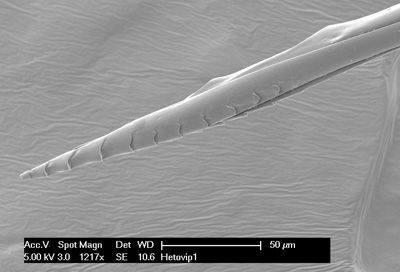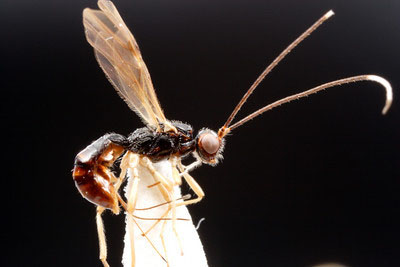Here are some shots from my training session this morning at the Beckman Institute's Scanning Electron Microscope (SEM). I haven't used SEM for years- wow! Great fun. Click on each image to enlarge.
For contrast, here's a photo of a wasp in the same genus taken with my standard Canon macro gear:
We'll be deciding over the coming months which type of images to use for our project. As you can see, there are some advantages to the SEM: crisp, clean images that give much better detail about the the structure of the insect. But there are drawbacks as well. SEMs don't look very much like what people see under a regular microscope, they lack color, and they are expensive. Hmmm...
- Log in to post comments
More like this
A few years ago I needed to image some ants for a short taxonomic paper. Lacking a decent specimen imaging system (like Entovision), I decided to snap the photos at home using my standard macro gear: a dSLR with the Canon MP-E lens. The images turned out fine and were published in Zootaxa with…
Heterospilus sp., undescribed species, Costa Rica
click to view the original image
I've been playing around a bit more with the freeware program CombineZP, and I thought I'd share this image of one of the wasps I'm working on in my current position. The image is a composite from 14 photos taken…
In 2002 I took a shiny new Nikon Coolpix 995 on a research trip to Argentina and Paraguay. I'd not done much photography to that point, but it was tremendous fun. I spent nearly as much time shooting the region's charismatic ant fauna as I did working on my dissertation project. The resulting…
Only one lens can take this shot
If you've paid attention to insect photography over the past decade, you'll likely have noticed that a single lens, Canon's MP-E 1-5x macro, has come to dominate the market. Every professional insect photographer I know owns one, and many of the dedicated…





SEM photos are awesome, but I vote for the Canon 20D dSLR & macro lens.